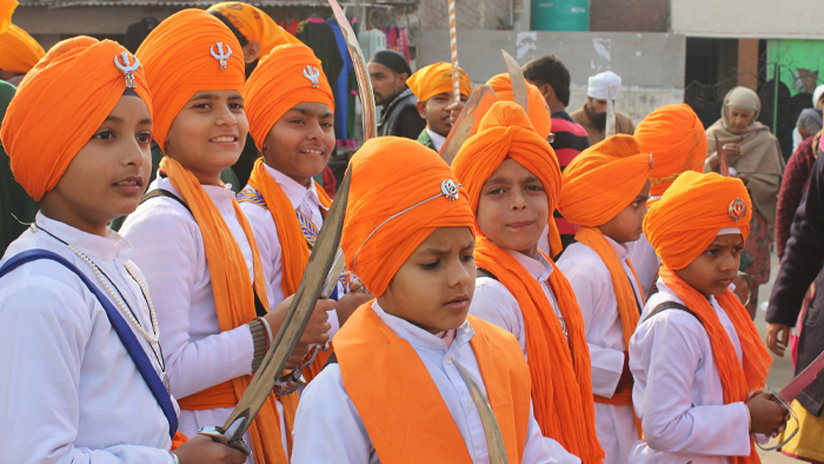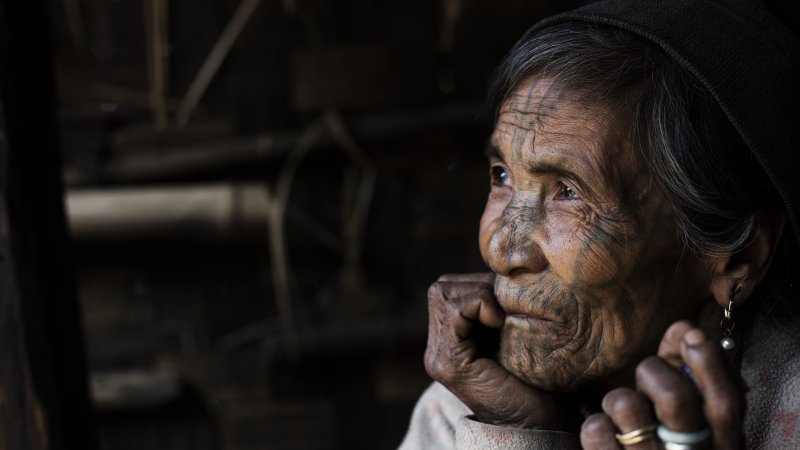
-
HOME
-
WHAT IS STANDOur Mission Our Values Our Help Contact
-
WHAT WE FIGHT FORReligious Freedom Religious Literacy Equality & Human Rights Inclusion & Respect Free Speech Responsible Journalism Corporate Accountability
-
RESOURCESExpert Studies Landmark Decisions White Papers FAQs David Miscavige Religious Freedom Resource Center Freedom of Religion & Human Rights Topic Index Priest-Penitent Privilege Islamophobia
-
HATE MONITORBiased Media Propagandists Hatemongers False Experts Hate Monitor Blog
-
NEWSROOMNews Media Watch Videos Blog
-
TAKE ACTIONCombat Hate & Discrimination Champion Freedom of Religion Demand Accountability
In Defense of All Faiths: The Legacy of Sikhism
A little over a year ago, I researched Sikhism extensively and wrote an overview of the religion as part of STAND’s Religious Literacy Project.
The more I learned, the more impressed I became with the Sikhs’ approach to other faiths. They consider that the divine spark burns within every man, woman and child, and that all are thus worthy of respect and support.

At the time Sikhism began in the late 15th century, India was controlled by Mughal emperors, who had an altogether different view. They suppressed other faiths, often forcing non-Muslims to choose between conversion and death.
Out of necessity, in such a climate, the Sikhs developed their own martial art. It was called “gatka.” But gatka was taught with a mandate: the Sikh warrior was to use his skills only in defense. And he was to use those skills to protect those who could not defend themselves.
Inevitably, this practice drew the wrath of the emperor of India, who had three of the early Sikh gurus murdered, brutally. And his violence extended beyond the gurus. After one particularly grisly battle, his troops returned to Delhi with 700 cartloads of Sikh heads and the heads of another 2,000 impaled on their spears.
In the face of this suppression, the Sikhs pressed on. They outlived first the Mughal empire, and then the British empire which, in 1947, finally left India to rule itself.
As David Callaway relates in the below article, the Sikhs’ defense of others has never ceased, even in modern times, when victories are won not by wielding the force of arms, but the force of law.
We are grateful to Freedom Forum for allowing us to reprint Mr. Callaway’s excellent article here.
Perspective: Sikh Americans Defend Religious Freedom for All
By David Callaway, Religious Freedom Specialist, Freedom Forum
This column was originally published on the Freedom Forum website and is republished here with permission.
Being an American means you do not have to choose between your deepest beliefs and your country—thanks, in part, to the work of these Indian Americans.
Since the 1850s when Asians began immigrating to the United States in large numbers, they have contributed to American society in profound ways. Yet few know how this diverse group, which includes Americans tracing their heritage to any of nearly 50 countries from India to Japan, has fought for the rights of all Americans to live according to their deepest beliefs.
Throughout our country’s history, Asian American communities have brought religious freedom cases to the courts and won not just for themselves, but for the benefit of all. In standing up for their religious beliefs, they’ve strengthened the shield of religious liberty, protecting every American’s First Amendment right to freedom of conscience.
Take Simratpal “Simmer” Singh, who was accepted to the U.S. Military Academy at West Point in 2006, where he began a distinguished military career.

As a practicing Sikh, Singh had worn a turban and beard for years, but the Army’s ban on long hair and beards meant he had to choose between military service and his deepest beliefs. Singh chose his country and served for a decade before challenging the policy under the Religious Freedom Restoration Act, which requires the government to have a compelling reason to limit free exercise rights.
While Capt. Singh’s particular faith may be unfamiliar to most Americans, many of us can empathize with wanting to believe and practice our beliefs without interference.
The courts agreed with Singh, and in 2017, the Army issued new guidelines that allow Sikhs to serve without having to abandon their articles of faith. Because of Singh, millions of Americans, Sikh or otherwise, can fully practice their faith while enlisted.
Throughout our country’s history, Asian American communities have brought religious freedom cases to the courts and won not just for themselves, but for the benefit of all.
Twenty years earlier, Sikh families in California set a similar precedent. In the 1990s, laws and policies against weapons on school grounds became stricter. California’s Livingston Union School District suspended Rajinder, Sukhjinder and Jaspreet Cheema, three Sikh siblings, after they wore their kirpans to schools. The kirpan is a short, curved blade worn by many Sikhs to symbolize their duty to defend the oppressed.
You might agree the school district had a responsibility to keep students and staff safe. But would safety mean banning Sikh practice?
The Cheema family pushed back, demonstrating that other districts accommodated kirpans by riveting blades to their sheaths. They pointed out the Livingston Union School District could do the same. Since then, the Cheemas’ story has been an example of how students can stay true to their beliefs while getting a public education.
Despite the many narratives pitting our identities against one another, our own rights are strengthened when we stand up for the rights of people who look and think differently than us.
Indian Americans like Capt. Singh and the Cheemas fought for their right to be both fully Sikh and fully American. In doing so, they protected the rights of any believer to do the same. Their struggle is not unique to Sikhism; Buddhist, Muslim and Christian Asian Americans have likewise brought challenges and won protections for their own faiths and any other.
As they demonstrate, being an American means you do not have to choose between your deepest beliefs and serving your country or between your god and your education. Americans who use their First Amendment rights as a shield to protect themselves and those with different beliefs should be celebrated.









